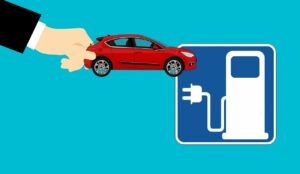OMC Power (OMC) and Honda Motor are joining forces to develop a business model that integrates repurposed EV batteries into distributed renewable energy (DRE) systems, a concept that could redefine energy access and storage economics across rural India.
With India’s DRE sector projected to exceed 30 GW by 2030, the challenge of reliable energy storage remains a critical bottleneck. Lithium-ion battery prices have dropped nearly 90% since 2010, but stationary storage adoption still faces cost and lifecycle limitations. By extending the life of Honda’s detachable batteries from two- and three-wheelers into secondary stationary applications, OMC and Honda aim to address both.
Honda’s detachable batteries, originally developed for its electric two- and three-wheelers, will be repurposed to power rural schools, clinics, telecom towers, and small enterprises. Integrated into OMC’s mini-grid and hybrid rooftop systems, these batteries have already shown promising performance in pilot projects conducted over the past few years. The large-scale rollout, scheduled to begin in January 2026, could mark one of India’s first commercial demonstrations of second-life battery use at distributed scale.
This model directly aligns with Honda’s global ambition to achieve carbon neutrality by 2050 and India’s national strategy on circular economy and waste management. Honda executive officer Minoru Kato said the company aims to “establish a resource-circulating value chain” in India, a market where over 80% of registered vehicles are two-wheelers—a segment undergoing rapid electrification.
From Mobility to Mini-Grids
Repurposing EV batteries for stationary use addresses a growing mismatch between EV battery end-of-life timelines and the country’s energy storage demand curve. Typically, electric two-wheeler batteries retain 70–80% of their capacity after retirement from vehicles—enough to meet low-load, high-frequency energy needs in remote infrastructure.
OMC Power’s CEO Rohit Chandra described the collaboration as a step toward “unlocking a new era of sustainable innovation.” Beyond energy access, the partnership supports India’s Energy-as-a-Service (EaaS) model, which integrates distributed solar generation, battery storage, and load management into flexible local grids. The company expects the new venture to complement its four existing business lines—telecom power, rooftop solar, mini-grids, and productive-use applications.
OMC Power, backed by Japan’s Mitsui & Co. and Chubu Electric Power, has already deployed over 500 smart mini-grids across North and Central India. These installations power telecom towers, solarize institutional rooftops, and support small-scale enterprises. By integrating repurposed EV batteries, OMC could reduce capital expenditure for new storage units—currently accounting for 30–40% of mini-grid costs—while enhancing grid reliability.
The company is also leading one of the world’s largest solarization programs for healthcare facilities under the RESCO model in Uttar Pradesh, spanning more than 200 hospitals and medical colleges. The initiative is projected to eliminate over 125,000 metric tons of CO₂ annually while securing power for critical care services—a scale that underscores OMC’s ability to manage distributed assets effectively.
The Honda-OMC alliance introduces a third dimension to India’s distributed energy transition: resource circularity. Instead of importing new batteries or relying on grid-scale lithium storage, the partnership proposes a localized, modular model that leverages existing assets within the electric mobility ecosystem.
Stay updated on the latest in energy! Follow us on LinkedIn, Facebook, and X for real-time news and insights. Don’t miss out on exclusive interviews and webinars—subscribe to our YouTube channel today! Join our community and be part of the conversation shaping the future of energy.

